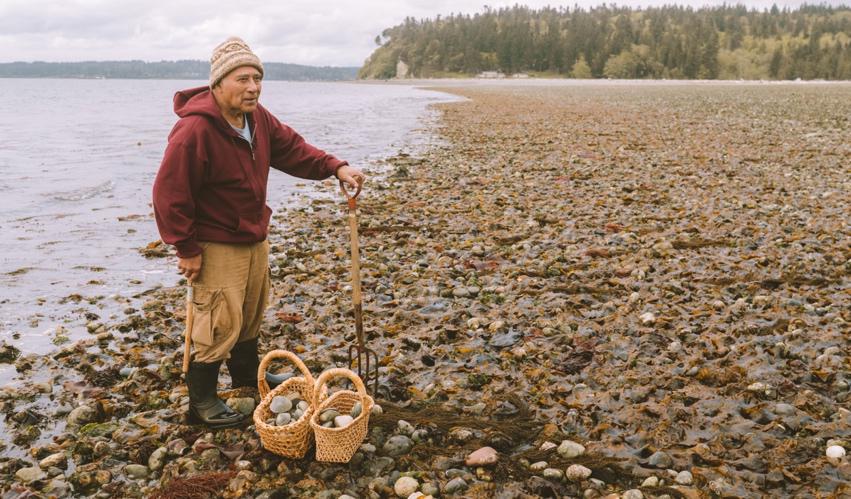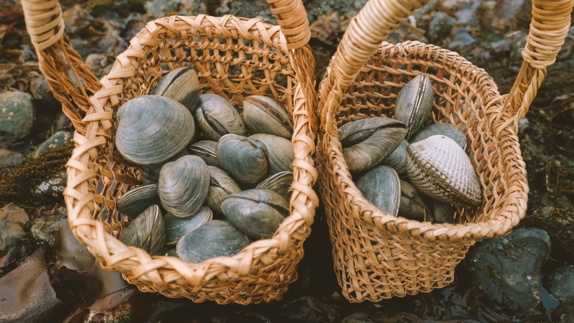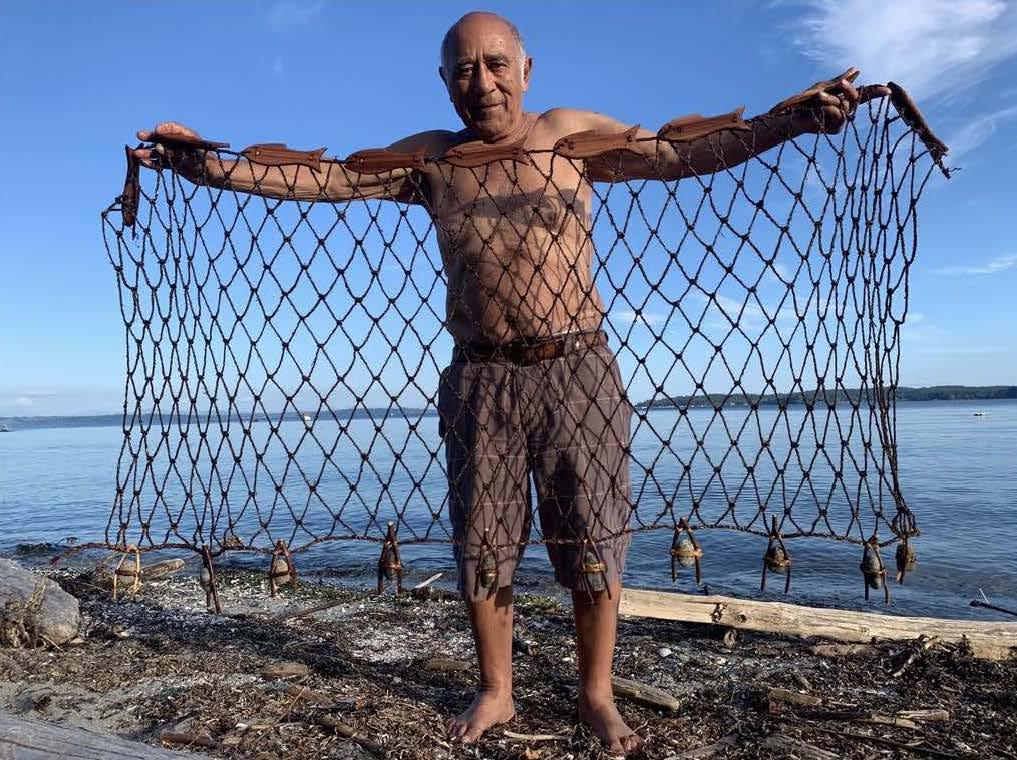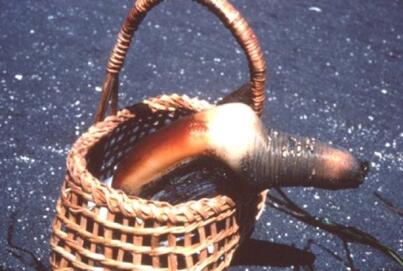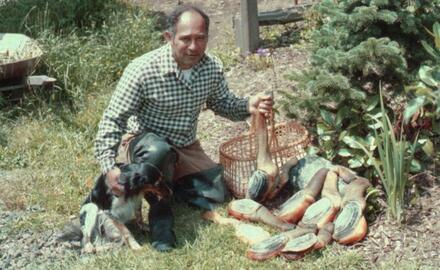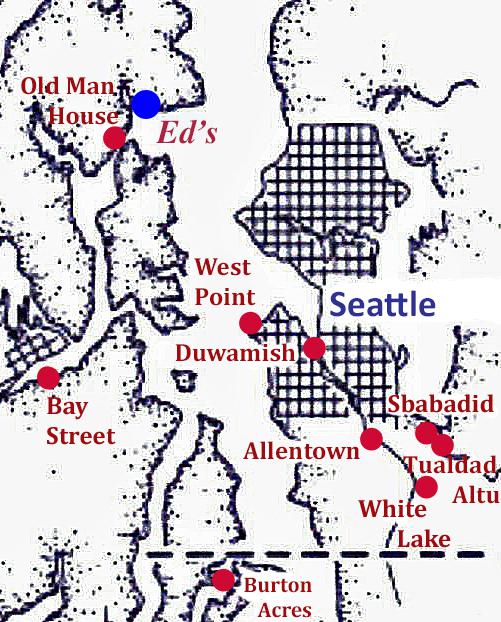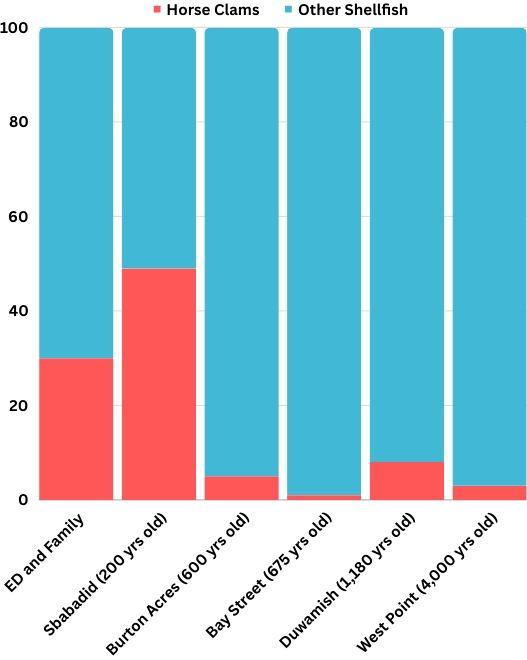LATE WINTER PNWAS
Thursday, February 29th, 2024
Thursday, February 29th, 2024
Generationally-Linked Archaeology:
“Living-Off-The-Land” for 4,000 Years
on the Salish Sea
By Ed Carriere, Suquamish Elder
and Dr. Dale Croes, WSU/PNWAS
“Living-Off-The-Land” for 4,000 Years
on the Salish Sea
By Ed Carriere, Suquamish Elder
and Dr. Dale Croes, WSU/PNWAS
PNWAS ZOOM Meeting
Thursday February 29th 2024
starting at 6:30 with program at 7:00 PM
ZOOM Broadcasted from Ed Carriere’s House
so we can show his gathering baskets, nettle fiber nets
and sewn tule mats
To join the ZOOM Meeting and see the presentation
please become a member today!
Thursday February 29th 2024
starting at 6:30 with program at 7:00 PM
ZOOM Broadcasted from Ed Carriere’s House
so we can show his gathering baskets, nettle fiber nets
and sewn tule mats
To join the ZOOM Meeting and see the presentation
please become a member today!
After detailing continuity trends in ancient wet site basketry style in different regions of the Northwest Coast, and especially in Ed Carriere’s inside-Salish Sea region for 4,500 years, we now explore the ancient trends of fauna/flora analysis from archaeological sites for approximately 4,500 years and link them to what Ed Carriere experienced, in his own words, supporting his “Mom,” Kia’h, Great Grandmother Julia Jacobs (b. 1874), mainly through “Living-off-the-Land” and waters of the Salish Sea.
We will test what we have termed Generationally-Linked Archaeology where we have followed ancient basketry and cordage styles Ed learned while raised by Julia Jacobs, preserving the “thread of knowledge” from deep-time in the Salishan Sea, through various evolving and statistically linked styles (Carriere and Croes 2018 on Amazon).
If this generational knowledge is demonstrated, then it should also be reflected in ancient efforts to prosper and support their families and large socially complex populations by living off the animal and plant resources in their region. A difference is that we are not looking at discrete archaeological artifacts, ancient basketry and cordage from wet sites, but fauna and flora data which do not have stylistic trends learned and passed along through time (much more ideational in terms of cultural transmission), and mostly reflect hunting, fishing, gathering trends.
We will test what we have termed Generationally-Linked Archaeology where we have followed ancient basketry and cordage styles Ed learned while raised by Julia Jacobs, preserving the “thread of knowledge” from deep-time in the Salishan Sea, through various evolving and statistically linked styles (Carriere and Croes 2018 on Amazon).
If this generational knowledge is demonstrated, then it should also be reflected in ancient efforts to prosper and support their families and large socially complex populations by living off the animal and plant resources in their region. A difference is that we are not looking at discrete archaeological artifacts, ancient basketry and cordage from wet sites, but fauna and flora data which do not have stylistic trends learned and passed along through time (much more ideational in terms of cultural transmission), and mostly reflect hunting, fishing, gathering trends.
The emphasis on different resources through time can be reflected by these data, which can be compared to Ed’s and Julia’s ways of making a “Living-off-the-Land.” I should point out as co-author of Ed’s desire to report his “Living-off-the Land,” that I am an archaeologist who specializes in discrete artifact analysis, especially basketry and cordage, so must be given some professional license in not specializing in archaeological fauna/flora analysis, though have found these studies at my sites and throughout the Northwest as important and have published through analyses in my site reports and some of my own fauna/flora analysis and observations.
An example by Ed:
Geoduck (Panope generosa)
An example by Ed:
Geoduck (Panope generosa)
Ed: And the geoduck, yeah we better talk about the geoducks. Okay that was a major resource, the Pacific geoduck, there were a lot of those on my beach out here. They’re one of the largest clams in the world and they’re the longest living clam. A geoduck can live 150 years and it gets bigger and larger and bigger and bigger. So, the geoduck that I dug out here weighed anywhere from 8 pounds up to 15 pounds and they have a long neck with the big white shell, a very large body (see below). So when growing in the sand, their spawn of the little clam hits the sand, and then it digs itself in and that's where it's going to live for the rest of its life. So, it develops there and over the years it keeps getting deeper and deeper and deeper into the sand. So that's why when you find a big one, like a 10-12 pounder, you gotta dig down there about 2 to 3 feet to get to the clam, because the neck is about 4 feet long. And so once you dig and the sand kept caving in, it was hard, when you're out next to the low tide mark….
(Left) a geoduck about filling my clam basket; me with harvested geoducks by my traditional cedar limb clam basket.
We also will discuss fishing, especially salmon, duck hunting (a specialty of Ed’s) and berry collecting and use of plant materials in making gathering baskets, nettle fiber fish and duck nets, sewn mats for camp shelters and cherry bark binding materials.
